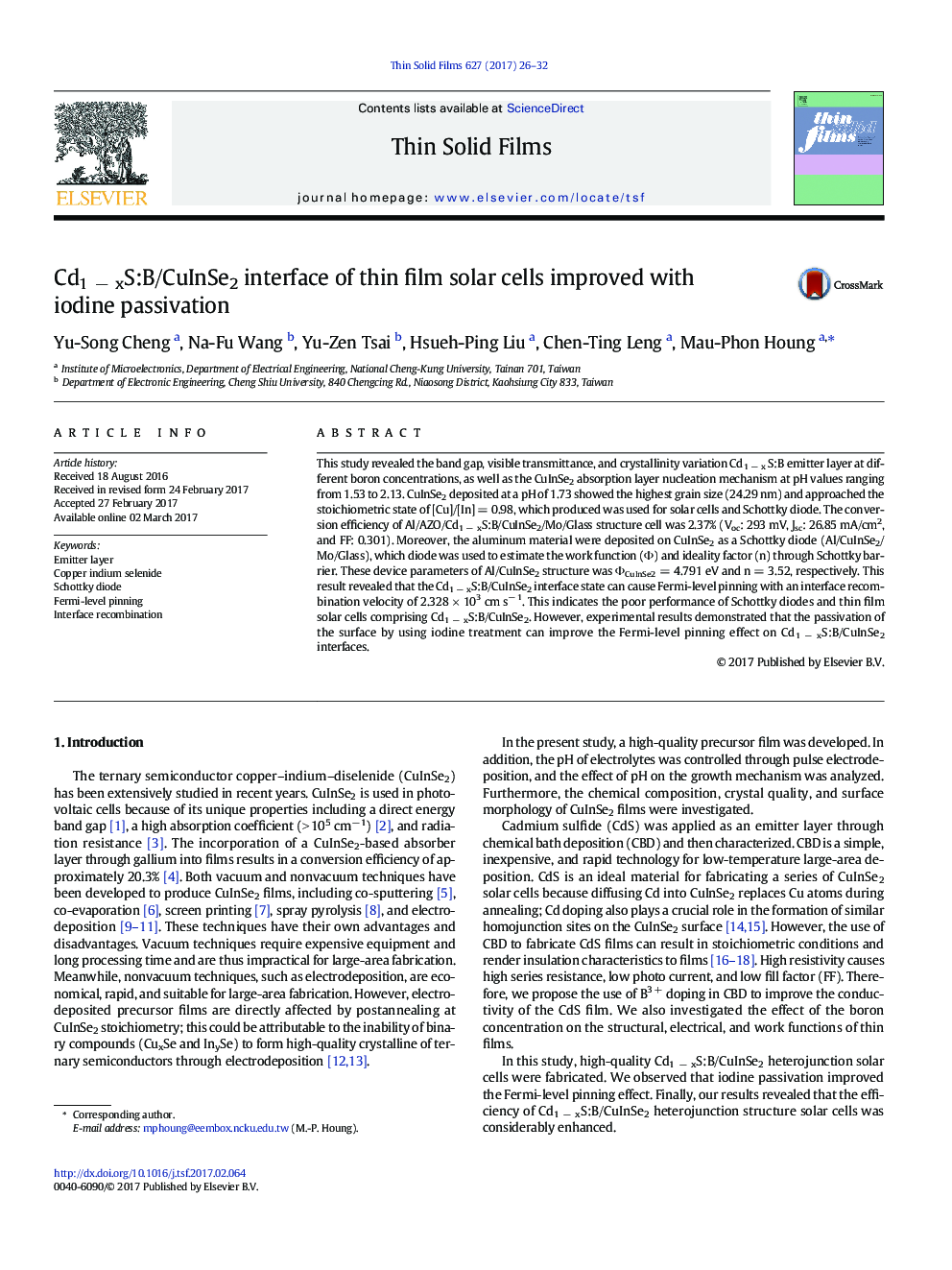| کد مقاله | کد نشریه | سال انتشار | مقاله انگلیسی | نسخه تمام متن |
|---|---|---|---|---|
| 5466258 | 1517985 | 2017 | 7 صفحه PDF | دانلود رایگان |
عنوان انگلیسی مقاله ISI
Cd1 â xS:B/CuInSe2 interface of thin film solar cells improved with iodine passivation
دانلود مقاله + سفارش ترجمه
دانلود مقاله ISI انگلیسی
رایگان برای ایرانیان
کلمات کلیدی
موضوعات مرتبط
مهندسی و علوم پایه
مهندسی مواد
فناوری نانو (نانو تکنولوژی)
پیش نمایش صفحه اول مقاله

چکیده انگلیسی
This study revealed the band gap, visible transmittance, and crystallinity variation Cd1 â x S:B emitter layer at different boron concentrations, as well as the CuInSe2 absorption layer nucleation mechanism at pH values ranging from 1.53 to 2.13. CuInSe2 deposited at a pH of 1.73 showed the highest grain size (24.29 nm) and approached the stoichiometric state of [Cu]/[In] = 0.98, which produced was used for solar cells and Schottky diode. The conversion efficiency of Al/AZO/Cd1 â xS:B/CuInSe2/Mo/Glass structure cell was 2.37% (Voc: 293 mV, Jsc: 26.85 mA/cm2, and FF: 0.301). Moreover, the aluminum material were deposited on CuInSe2 as a Schottky diode (Al/CuInSe2/Mo/Glass), which diode was used to estimate the work function (Φ) and ideality factor (n) through Schottky barrier. These device parameters of Al/CuInSe2 structure was ΦCuInSe2 = 4.791 eV and n = 3.52, respectively. This result revealed that the Cd1 â xS:B/CuInSe2 interface state can cause Fermi-level pinning with an interface recombination velocity of 2.328 Ã 103 cm sâ 1. This indicates the poor performance of Schottky diodes and thin film solar cells comprising Cd1 â xS:B/CuInSe2. However, experimental results demonstrated that the passivation of the surface by using iodine treatment can improve the Fermi-level pinning effect on Cd1 â xS:B/CuInSe2 interfaces.
ناشر
Database: Elsevier - ScienceDirect (ساینس دایرکت)
Journal: Thin Solid Films - Volume 627, 1 April 2017, Pages 26-32
Journal: Thin Solid Films - Volume 627, 1 April 2017, Pages 26-32
نویسندگان
Yu-Song Cheng, Na-Fu Wang, Yu-Zen Tsai, Hsueh-Ping Liu, Chen-Ting Leng, Mau-Phon Houng,